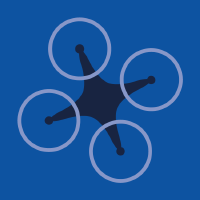Topic Menu
► Topic MenuTopic Editors

Unmanned Vehicles Technology and Embodied Intelligence Systems for Intelligent Transportation
Topic Information
Dear Colleagues,
At present, the new unmanned vehicles technology and embodied intelligence systems for intelligent transportation are in a period of change. In the foreseeable near future, unmanned systems represented by UGV (Unmanned Ground Vehicle) and UAV (Unmanned Aerial Vehicle) will build new ground and air transportation, logistics, and operation systems, which will have great application potential in various fields of industry and agriculture. Unmanned driving systems (on the open road and the closed road) and intelligent agricultural machinery and equipment are representative intelligent transportation applications. 'Interactive' perception, 'learnable' cognition and decision making, and 'self-growth' behavior control are three important features of embodied intelligence. Correspondingly, multi-sensor (Lidar, millimeter wave radar, and optical sensor) and multi-source information fusion technology, SLAM technology, and bionic vision technology are applied to the perception stage. Brain-imitating intelligence and end-to-end deep learning neural networks are applied to the cognition and decision-making stage. Disturbance self-rejection control, integration control, bionic formation control, and manned/unmanned hybrid cooperative control technology are applied to the behavior control stage.
The scope of solicitation includes, but is not limited to, the following:
- Automatic driving, intelligent driving, and unmanned driving; embodied intelligence;
- Perception, cognition, and behavior;
- SLAM (Simultaneous Localization and Mapping);
- Lidar, millimeter-wave radar, RGB and RGB-D machine vision perception, and multi-spectral optical perception; 'interactive' perception;
- 'Learnable' cognition and decision making;
- 'Self-growth' behavior control; biologically inspired visual perception;
- Multi-sensor and multi-source information fusion;
- Brain-imitating intelligence and end-to-end deep learning neural networks;
- Disturbance observer and active disturbance rejection control;
- Perception, decision-making and control integration technology;
- Biologically inspired formation control;
- Hybrid cooperative control of manned/unmanned systems.
Dr. Jian Chen
Dr. Min Xia
Dr. Hui Xie
Topic Editors
Keywords
- unmanned systems
- embodied intelligence
- agricultural and industrial applications
- intelligent transport
- autonomous driving
- UGV
- UAV
- SLAM
- perception, decision making, and control
Participating Journals
| Journal Name | Impact Factor | CiteScore | Launched Year | First Decision (median) | APC | |
|---|---|---|---|---|---|---|

Aerospace
|
2.1 | 3.4 | 2014 | 24 Days | CHF 2400 | Submit |

Applied Sciences
|
2.5 | 5.3 | 2011 | 17.8 Days | CHF 2400 | Submit |

Drones
|
4.4 | 5.6 | 2017 | 21.7 Days | CHF 2600 | Submit |

Electronics
|
2.6 | 5.3 | 2012 | 16.8 Days | CHF 2400 | Submit |

Eng
|
- | 2.1 | 2020 | 28.3 Days | CHF 1200 | Submit |

Remote Sensing
|
4.2 | 8.3 | 2009 | 24.7 Days | CHF 2700 | Submit |

Sensors
|
3.4 | 7.3 | 2001 | 16.8 Days | CHF 2600 | Submit |

MDPI Topics is cooperating with Preprints.org and has built a direct connection between MDPI journals and Preprints.org. Authors are encouraged to enjoy the benefits by posting a preprint at Preprints.org prior to publication:
- Immediately share your ideas ahead of publication and establish your research priority;
- Protect your idea from being stolen with this time-stamped preprint article;
- Enhance the exposure and impact of your research;
- Receive feedback from your peers in advance;
- Have it indexed in Web of Science (Preprint Citation Index), Google Scholar, Crossref, SHARE, PrePubMed, Scilit and Europe PMC.



